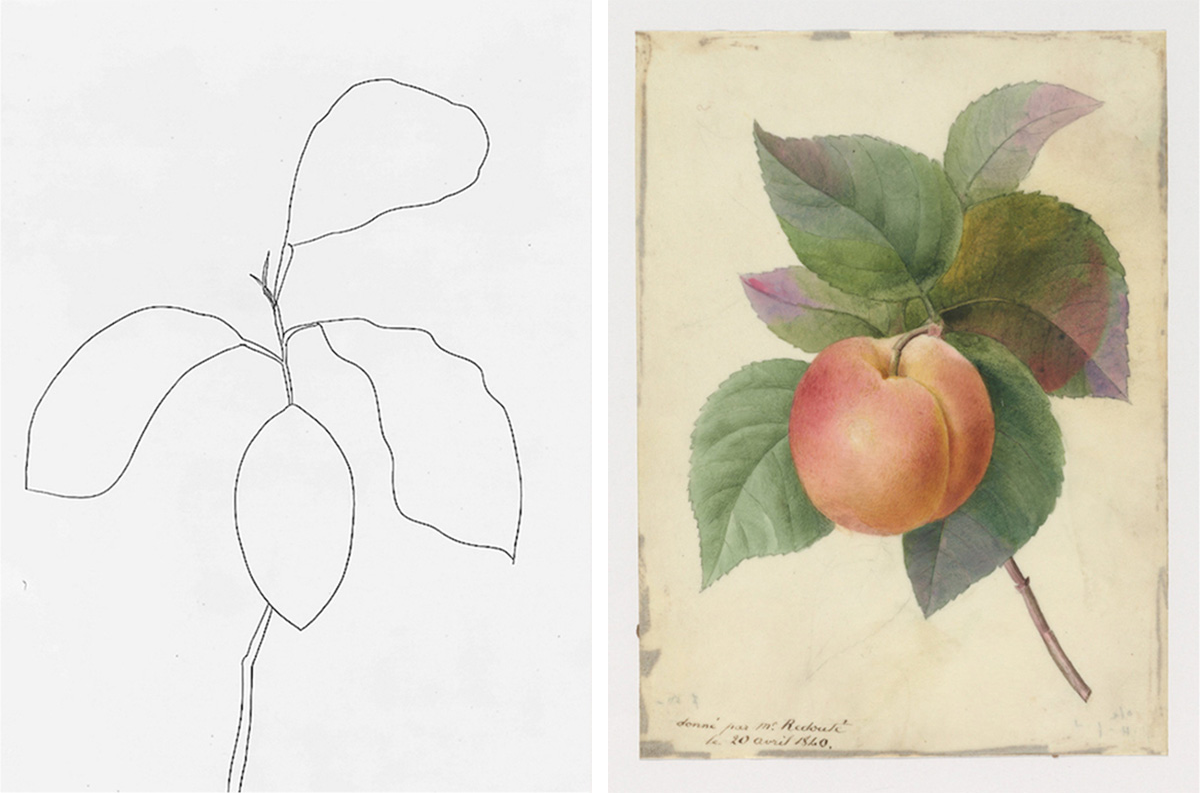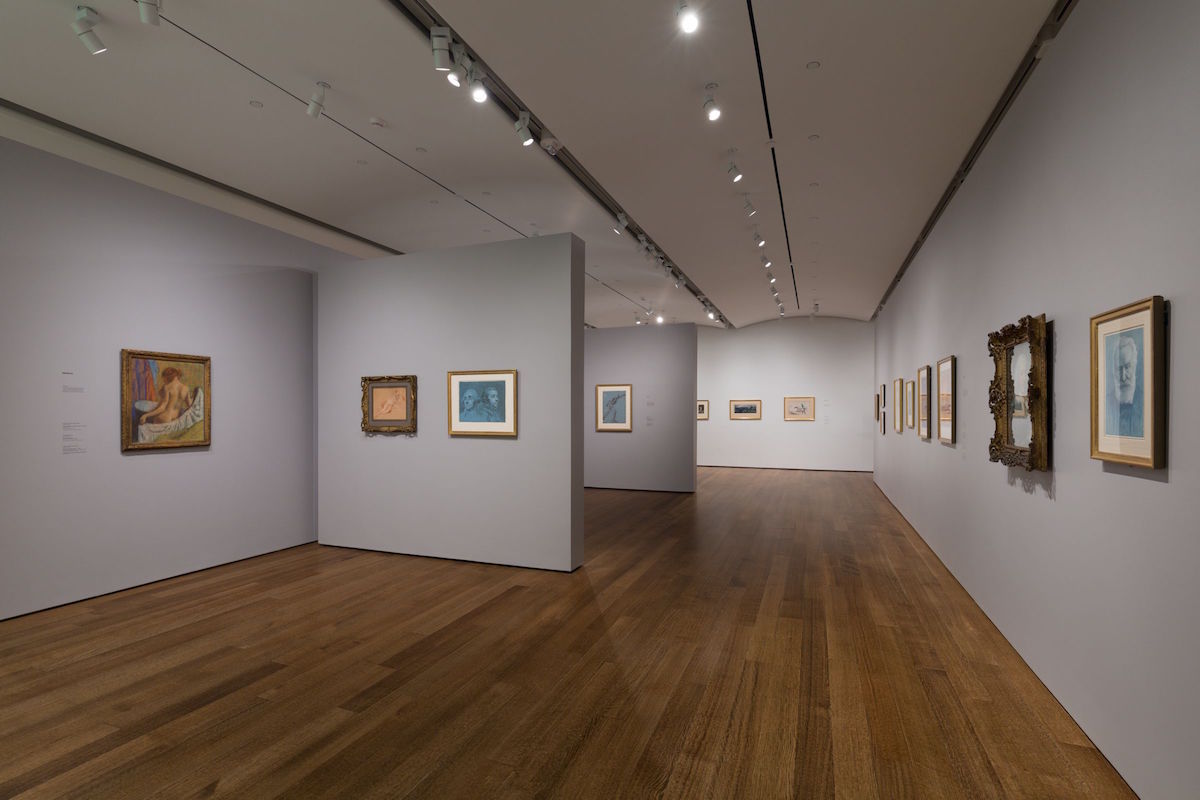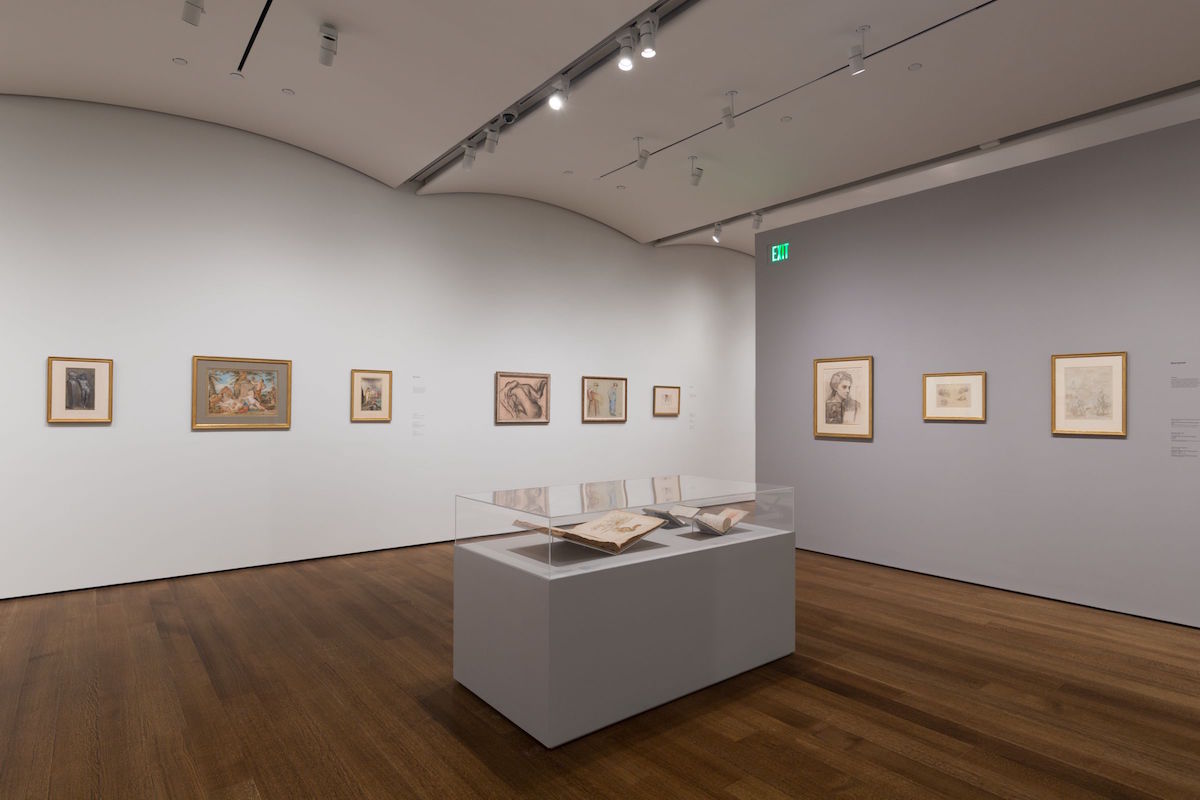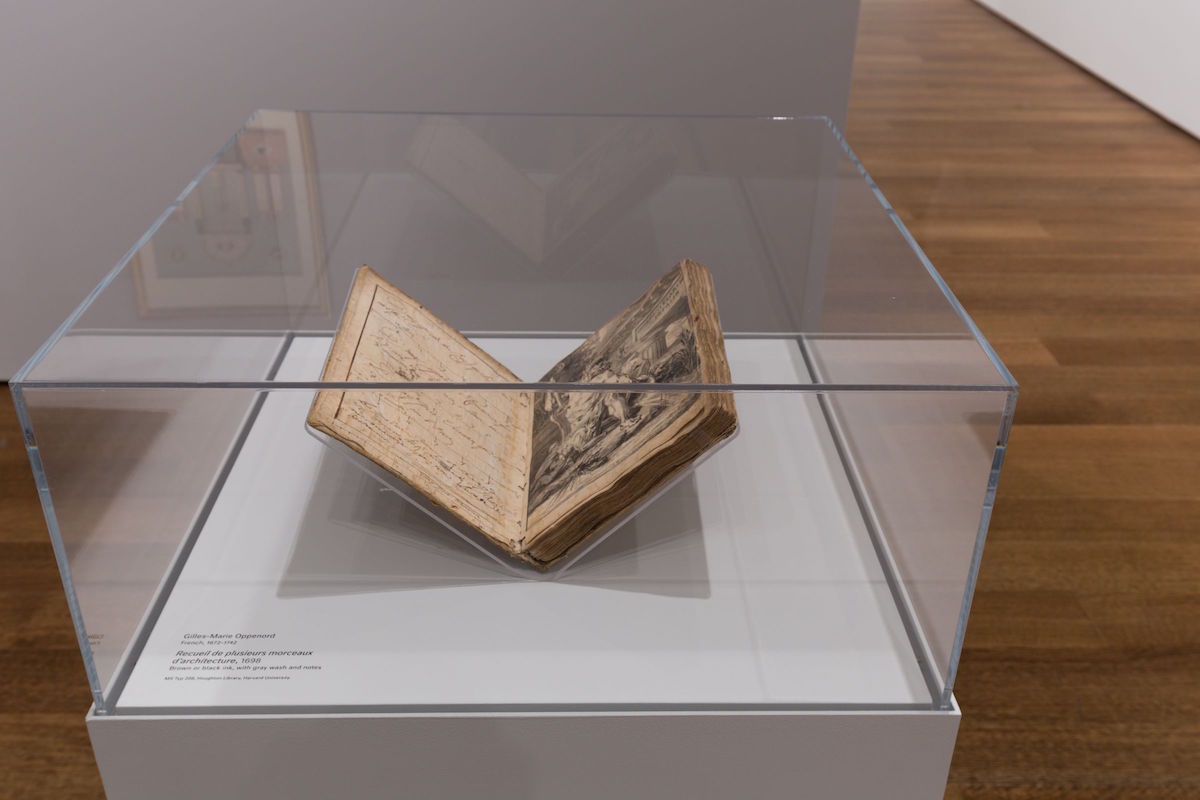
LEFT: Fig. 1. Ellsworth Kelly, Orange, 1968. Graphite on paper, 74 x 58.7 cm. Metropolitan Museum of Art, New York. Gift of the artist, in honor of William S. Lieberman, 1998 (1998.374). © The Metropolitan Museum of Art.
RIGHT: Fig. 2. Pierre Joseph Redouté, Study of a Peach, with Leaves, 1820. Watercolor on vellum, 21 x 16 cm. TypDr 815.R735.20s Sz2. © Houghton Library, Harvard University.
Having strolled one day into an exhibition of Ellsworth Kelly’s abstemious drawings of plants and flowers at the Metropolitan Museum of Art—pure outlines, no modeling, a modernist garden of lines—I pondered a question: how does Kelly’s work fit into the larger story of drawing (Fig. 1)? Thinking of a historical tradition, my dix-huitièmiste heart led me to Pierre-Joseph Redouté, the late eighteenth-century botanist illustrator renowned for his work in the gardens of Napoleon’s first wife, Josephine de Beauharnais. Redouté’s uncannily “real” depictions of flowers and fruit, often drawn on vellum that enhanced their reality effect, are, of course, a world apart from Kelly’s botanical abstractions (Fig. 2). What separates them is a different conception of nature but also a different understanding of drawing as a medium and practice. How could one present the rich and complex story of the transformation of drawing in the two centuries between Redouté and Kelly in the form of an exhibition? How might one use the very structure of display to make an argument about drawing’s emergence into modernity? More generally, how can art objects serve to construct a history?

Fig. 3. Installation view of Drawing: The Invention of a Modern Medium. Photo: Katya Kallsen © President and Fellows of Harvard College.
These questions led me to propose the exhibition Drawing: The Invention of a Modern Medium to the Harvard Art Museums where it is currently on view (Fig. 3). A collaborative effort, the exhibition was developed in the course of two seminars taught by myself and Elizabeth M. Rudy, Carl Weyerhaeuser Associate Curator of Prints at HAM. The first seminar engaged (mostly) graduate students in working out the conceptual frame of the exhibition based on my initial proposal, choosing the objects from the pre-selected pool, and drafting the catalogue entries/essays. The second group, consisting mostly of undergraduates, finalized the choice of objects to be displayed (as opposed to those that were featured only in the catalogue), and defined the exhibition’s pedagogical frame, writing wall texts and creating a digital tool that includes the expanded version of these texts and the recordings of students’ personal commentaries about their experiences working on the project. It is through the effort and commitment of these two teams that the exhibition acquired its final, unorthodox form.
Based on eighteenth- and nineteenth-century works in the Harvard Art Museum’s collections, the exhibition does not offer an exhaustive survey of drawing practices in this period. Its goal is not to illustrate a preexisting history but rather to encourage the viewer to construct one by thinking with and through the exhibited objects. To this end, we dispensed with the traditionally privileged chronological, stylistic, or artist- and oeuvre-oriented formats of presentation, adopting instead a non-linear mode based in a constellation of interrelated categories. The exhibition is divided into three main sections that address the principal ways of understanding drawing—as a medium, a discourse, and an object—and, within them, into several subsections. The section on “Medium” foregrounds both the materials and techniques of drawing and its basic conventions (such as surface, line, color, stain, and touch). Pursuing the question of what drawing as drawing can tell us that other mediums cannot, we sought to activate the material aspects of drawing, to make visible the agency of the medium itself. Under the category of “Discourse” the exhibition explores some of the ideas generated by, or associated with, drawing, as well as the ways in which drawings themselves may be seen, to paraphrase the eighteenth-century theorist, Roger de Piles, as “things that think.”[1] We consider notions that have been linked to drawing in particular, such as “idea,” “hand,” “memory,” or “blindness,” and examine others—“process,” “time,” “body,” “eros,” “violence,” and “labor,”—that have acquired a significant or intriguing articulation through this form of practice, or played an important role in the commentaries on it (Fig. 4). Under the third main category of “Object,” we address the multiple functions and uses of drawing, focusing specifically on its role as a tool of artistic instruction, its relation to reproductive technologies, its uses in the domain of architecture and decorative design, and its contribution to the production of knowledge (Fig. 5).

Fig. 4. Installation view of Drawing: The Invention of a Modern Medium, section “Discourse.” Photo: Katya Kallsen © President and Fellows of Harvard College.

Fig. 5. Installation view of Drawing: The Invention of a Modern Medium, section “Object.” Photo: Katya Kallsen © President and Fellows of Harvard College.
Each section of the exhibition comprises drawings from different moments in time and of different type and medium: finished drawings are shown together with preliminary sketches, works in chalk or charcoal appear next to watercolors (Fig. 6). This chronological discontinuity and typological diversity are deliberate. Following the old avant-garde principle of “estrangement,” this mode of presentation exploits the productive effects of defamiliarization. Its larger goal is to propose an alternative, non-diachronic model of art history based in objects.

Fig. 6. Installation view of Drawing: The Invention of a Modern Medium, subsection “Labor.” Photo: Katya Kallsen © President and Fellows of Harvard College.
One of the key arguments of the exhibition is that drawing becomes modern when it leaves the narrow precincts of the artist’s studio and enters the larger social and cultural sphere, a process that originated in the eighteenth century. My hope has been that the exhibition itself would expand the field within which drawing operates, which I think it did. By offering students hands-on experience of the objects, our project transformed drawing into a learning tool, making it also available as such to the university’s community and the public at large. Currently another group of students has been engaged in the exhibition. The participants in a seminar, Learning from Drawing, that I am teaching this semester have been asked to consider how the mode of display adopted in our exhibition affected the drawings on view, e.g., how the placement of Seurat next to Courbet made us think of these artists’ work differently (Fig. 7). Listening to the students’ weekly presentations in front of the exhibited works, I get to look at the drawings that I grew exceedingly familiar with through their eyes and to think about and enjoy them anew. For their final assignment, the students produce their own proposals for an imaginary exhibition. As they learn how to experience art, they also learn how to design the field of others’ experience, and to construct an art history that is their own.

Fig. 7. Installation view of Drawing: The Invention of a Modern Medium, subsection “Touch.” Photo: Katya Kallsen © President and Fellows of Harvard College.
Ewa Lajer-Burcharth is William Dorr Boardman Professor of Fine Arts at Harvard University
[1] De Piles defined drawing as an image of how the painter “thinks things.” See his “Des Desseins” in Abrégé de la vie des peintres (Paris: C. de Sercy, 1699), 71.
Cite this note as: Ewa Lajer-Burcharth, “Curator’s Notes: ‘Drawing: The Invention of a Modern Medium’,” Journal18 (May 2017), https://www.journal18.org/1746
Licence: CC BY-NC
Journal18 is published under a Creative Commons CC BY-NC International 4.0 license. Use of any content published in Journal18 must be for non-commercial purposes and appropriate credit must be given to the author of the content. Details for appropriate citation appear above.
